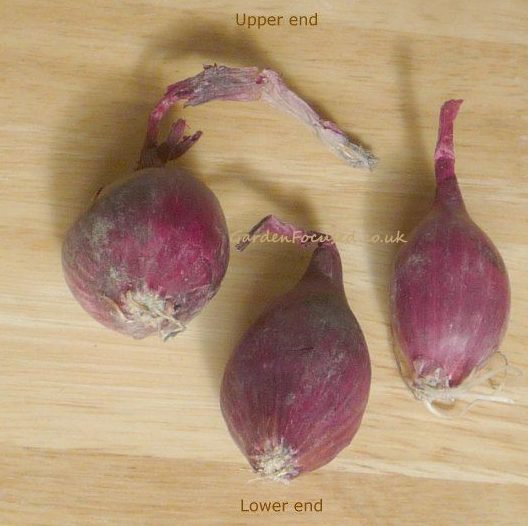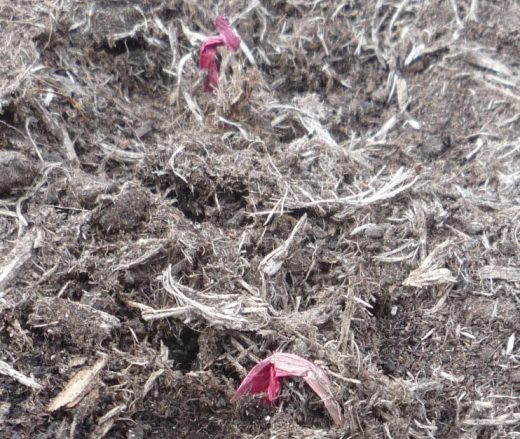AUTUM PLANTING ONIONS
Autumn planting onions are sometimes referred to as Japanese onions and vice versa. They are both treated the same and grow in the same way.
The checklist below will help you decide if autumn planting onions are a crop you want to grow in your garden:
- Buy the onion sets in September for planting in late September to late October. Seeds are available but the procedure if much more drawn out and sets definitely work best at this time of year.
- The onion crop will be ready for harvesting in June.
- Autumn planting onions are a low maintenance crop. Plant them, weed them and then harvest them.
- They require a full sun position.
- Rotting over winter is the key problem with this crop. With this in mind waterlogged and / or heavy soils should be avoided. See the section below about avoiding rotting for our key tips to help overwinter onions in heavy ground.
- Autumn planting onions normally ready a month to six weeks earlier than the normal types. They don’t store well, four weeks at most.
WHERE TO PLANT AUTUMN ONION SETS
The first requirement for successful growing of autumn onions is sunlight. The key periods are September to November and then from March until June. For the first month after planting, they sense the shortening days and will use all the energy from the sun to put down a root system
From November to early March the onions will be
hibernating, basically just be waiting for some early spring sunshine to wake them up. When spring arrives, the combination of lengthening days and more warmth allows them to grow foliage and enlarge the bulb using the established root system.
The next requirement is a relatively firm, but not compacted soil which drains well. The firm soil allows the roots to anchor the plant and enable it to withstand winter weather. Good drainage is essential because if the bulbs stand in water over winter it will rot.
The ideal practice is to dig the ground a month or more before planting the onion sets. This will allow the soil to settle and firm up slightly. At the same time incorporate any well rotted compost (not new manure or only partially rotted compost) into the ground as you dig. Spent tomato and / or compost is ideal.
Onions should not be grown in the same ground where onions (or plants of the same family such as leeks, garlic, carrots, beetroot etc.) were grown the previous season. See our easy to understand explanation of crop rotation here if you have any doubts.
Potatoes are probably the ideal crop to follow on with autumn planted onions. The soil will have been well dug already for the potatoes and weed free. Beans and peas are also good crops to precede onions.
WHEN TO PLANT AUTUMN ONION SETS
The obvious answer to this question is autumn of course but there are large temperature differences depending on where you live in the UK.
The best time to plant onions in autumn is during early September 2017. If you plant too early the foliage will be at risk from winter weather damage. If you plant too late the roots will not have time to establish and the plant may not survive when the cold weather sets in.
HOW TO PLANT AUTUMN ONION SETS
Autumn planted onion sets are planted in exactly the same way as normal onions.
First mark out the row with a bamboo cane or string to keep the row in a straight line. Then every 10cm / 4in make a small hole in the soil with your finger and place an onion set into it. Plant rows about 30cm / 1ft apart, just enough to allow for hoeing weeds.
It’s important to plant them the correct way up with the root end onto the soil and tassel end uppermost. The picture on the right can be enlarged by clicking on it if you have any doubts. By making a little hole for each onion set rather than just forcing them into the ground you will avoid damaging the roots.
Now gather some soil around the planted onion set so that just the top tassel appears above the soil surface. Gently firm the soil down. Scatter some long-lasting fertiliser (bonemeal or blood fish and bone)
around the surrounding soil and work it into the soil surface wit a trowel.
For the first few weeks birds may well be a problem for onion sets. To avoid this spread some horticultural fleece over the soil surface and secure it down with soil or stones. The fleece can be removed after a month.
CARE OF AUTUMN PLANTED ONION SETS
The beauty of autumn planted onions is that they require almost no care. Keep them weeded is about the only job that needs to be done and very few weeds grow in winter so that makes it easier.
Water is only a problem very occasionally. When you plant the sets make sure the ground is watered well to help the onions establish themselves. After that, normal rainfall in the UK autumn winter and spring should be more than sufficient.
Many believe that onions are shallow rooted but nothing could further from the truth. Onion roots do down 80cm / 30in and if you don’t believe this, read the section in our onion seed page which sites the source of this fact. It also describes how important it is to avoid root disturbance if you want tip top onions.
HOW TO AVOID WATER-LOGGING ONIONS
If you live an area of the UK which suffers lots of autumn and winter rain it may not be feasible to grow autumn planted onions because they will be water-logged. There is a relatively simple solution to this problem. It’s based on the fact after planting autumn onions they only have time to grow for a few weeks before winter begins to send them into semi-hibernation mode.
Here’s the solution. get some small pots and potting compost, set up your onion sets in the compost so that a third is showing above the surface. Water well and place them outside on some gravel so that the pots drain well.
Preferably place them against a house wall where they will get some light rain occasionally.
Let them grow on until early March and then plant them outside in soil that is well drained.
BEST VARIETIES OF AUTUMN PLANTING ONIONS
There aren’t too many onion varieties which will withstand the weather that the UK winter will throw at them. We list some of the best from our own personal experience.
SENSHYU
Very cold hardy, this variety overwinters in most parts of the UK. Yellow skin, semi-flat, average sized bulbs. First introduced to the UK in 1972 this one of the original Japanese onions which has stood the test of time. Sometimes called Senshyu Yellow.
RADAR
Light brown skin, mild to medium flavour. This variety stores better than most when harvested in June. Resists bolting.
ELECTRIC
Red skin with white and red flesh. Has a stronger than average flavour, Keeps for four weeks.

